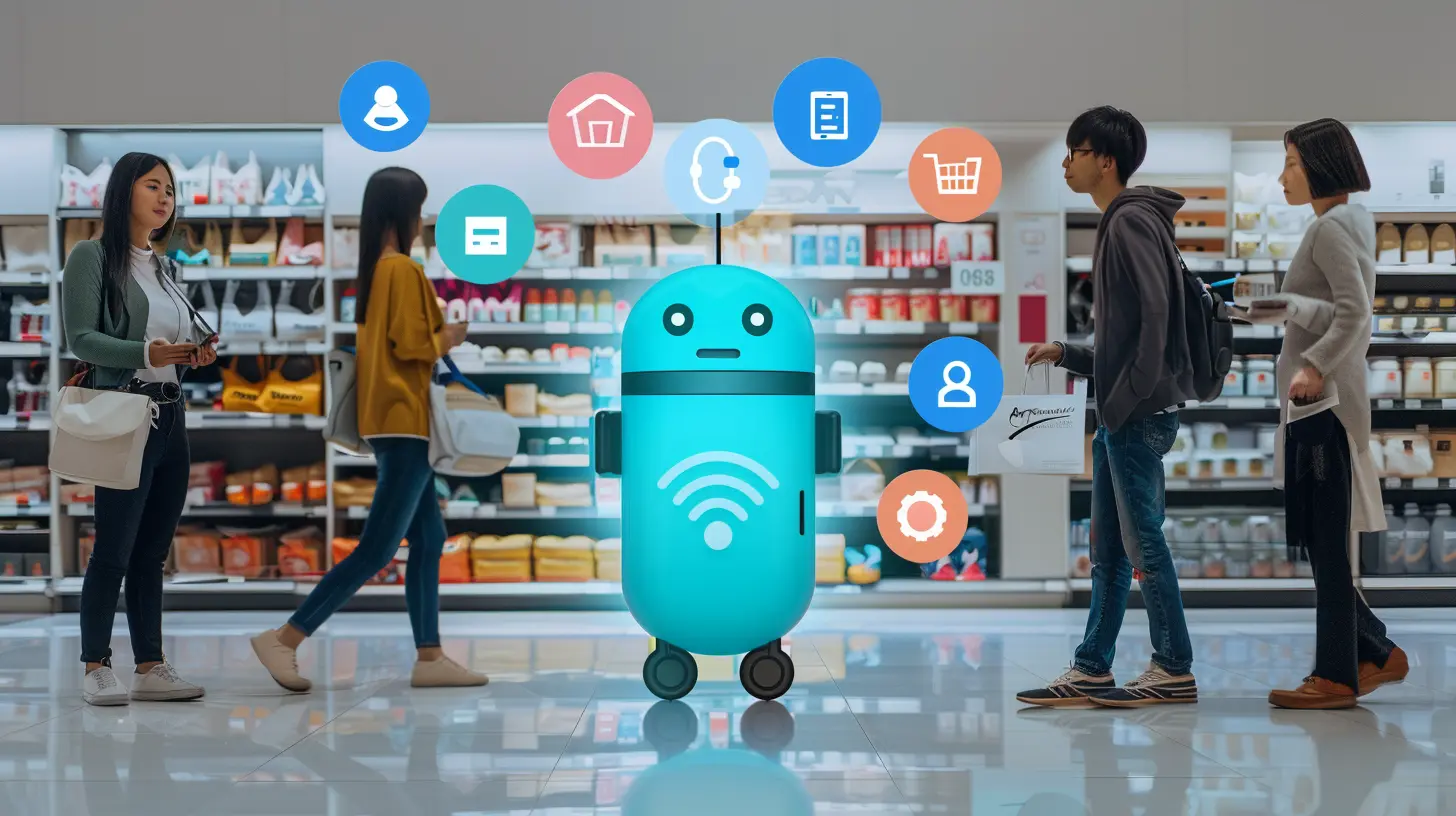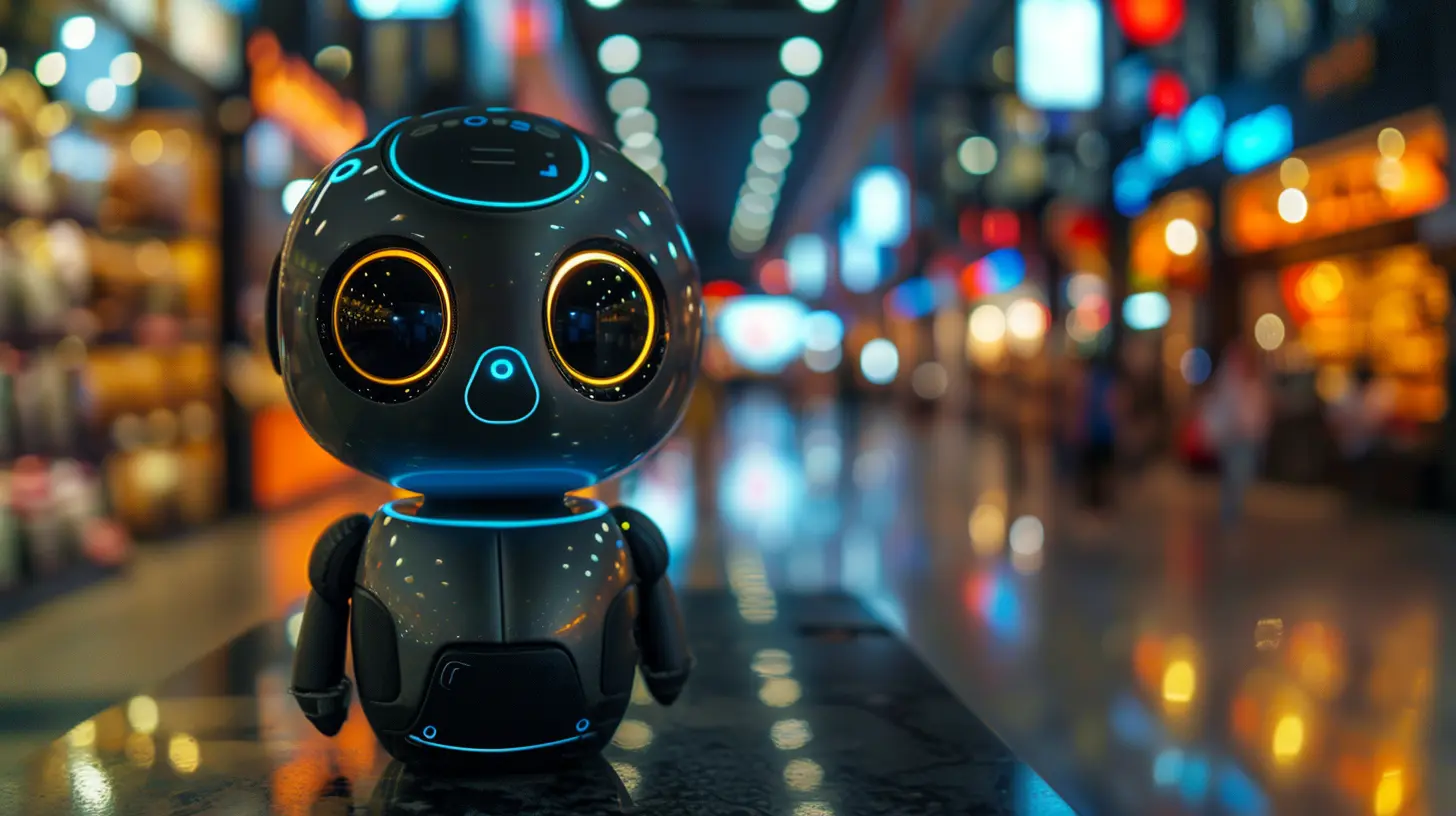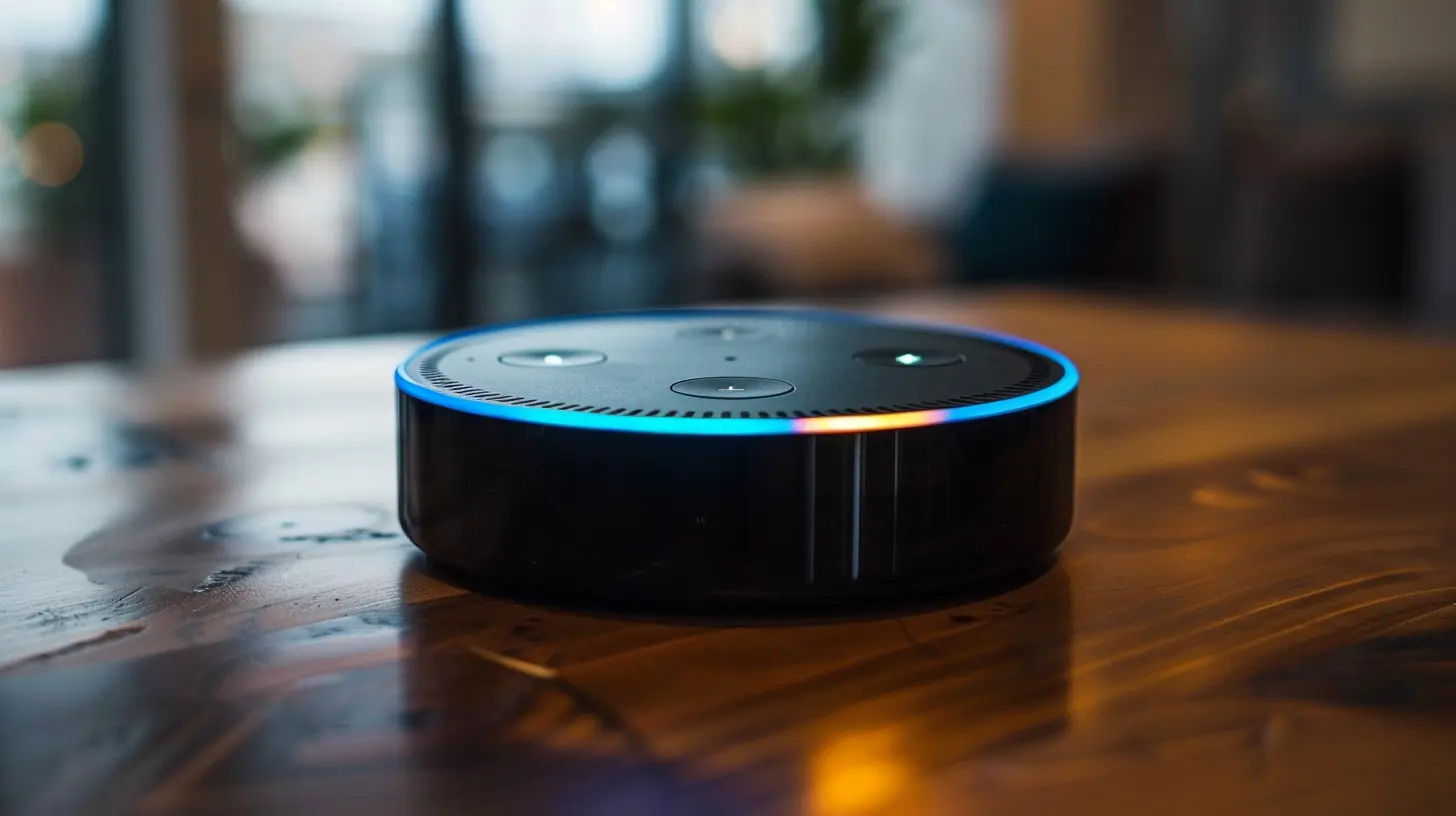How Digital Assistants are Leading the Charge in Smart Retail
11 February 2025
In the ever-evolving world of technology, one trend is standing out and revolutionizing industries across the board: digital assistants. You’ve probably heard of them – Siri, Alexa, Google Assistant – these helpful, voice-operated tools are becoming more than just household companions. They are now stepping into the world of retail, transforming the way we shop, manage inventory, and even interact with customer service.
But how exactly are digital assistants leading the charge in smart retail? And what makes them so crucial for the future of shopping? Let’s unpack that.

The Rise of Smart Retail
Before we dive into the nitty-gritty of digital assistants, let’s first talk about smart retail. You’ve likely noticed how retail has evolved over the last decade. No longer are we just walking into stores, picking up a few items, and heading to the checkout. Retail has integrated with technology in ways that would have seemed like science fiction not too long ago.From smart mirrors that let you try on clothes virtually to cashier-less stores like Amazon Go, smart retail is all about leveraging technology to enhance the shopping experience. The goal? To make shopping more personalized, efficient, and, well… smarter.
Enter digital assistants. In this new wave of retail innovation, digital assistants are taking center stage. They're not just a cool feature anymore; they’ve become an essential tool in retail's transformation into a tech-driven powerhouse.

What Are Digital Assistants?
First things first, let’s clarify what we mean by "digital assistants." Simply put, these are AI-powered tools that help users with various tasks. They can respond to voice commands, answer questions, set reminders, and even control smart devices.Think about Siri on your iPhone or Alexa on your Echo device. These digital assistants can also be found in smart speakers, phones, cars, and increasingly, in retail spaces. They use natural language processing (NLP) and machine learning to understand and respond to human speech, making them incredibly useful in a variety of situations.
Now, imagine that same level of convenience applied to shopping. That’s exactly what’s happening in smart retail.

The Role of Digital Assistants in Retail
So, how are digital assistants actually being used in retail? The possibilities are almost endless, but let’s break it down into a few key areas:1. Personalized Shopping Experience
One of the biggest advantages of digital assistants is their ability to personalize the shopping experience. Imagine walking into a store and having a virtual assistant greet you by name, ask if you need help finding something, and even suggest products based on your previous purchases. Sounds like something out of "The Jetsons," right?This is becoming a reality. Retailers are integrating digital assistants into their apps and in-store kiosks to offer personalized recommendations. These assistants can analyze a customer’s shopping behavior, preferences, and history to make tailored suggestions.
For example, let’s say you’re a regular at a clothing store. The store’s digital assistant could recommend items that match your style or suggest accessories that complement a recent purchase. It’s like having a personal shopper, but without the high price tag.
2. Voice-Activated Shopping
Voice commerce is booming, and digital assistants are at the heart of it. You’ve probably already used voice commands to order something from Amazon or check the status of a delivery. Well, this is just the tip of the iceberg.As voice recognition technology improves, more retailers are integrating voice-activated shopping options. Digital assistants allow customers to search for products, make purchases, and even track orders with just a few spoken words. No need to type out searches or navigate complicated websites. Just say what you need, and the assistant handles the rest.
This is especially convenient for busy shoppers who want to make quick purchases on the go. It’s also a game-changer for people with disabilities, making online shopping more accessible than ever before.
3. Inventory Management Made Easy
Digital assistants aren’t just changing the way customers shop—they’re also helping retailers behind the scenes. One of the most tedious aspects of running a store is managing inventory. Keeping track of what’s in stock, what needs to be reordered, and what’s not selling can be a logistical nightmare.That’s where digital assistants step in. With AI-powered tools, retailers can automate much of the inventory management process. Digital assistants can monitor stock levels in real-time, alert store managers when items are running low, and even place automatic orders for replenishment. This not only saves time but also reduces the risk of human error.
Imagine never having to deal with the frustration of walking into a store, only to find out they're out of stock on the item you wanted. Digital assistants are making that a thing of the past, ensuring shelves are always stocked and ready for customers.
4. Customer Service Transformation
Let’s be honest, dealing with customer service can be a headache. Whether it’s waiting on hold, navigating endless phone menus, or trying to explain your issue to multiple representatives, it’s rarely a pleasant experience. But digital assistants are changing that.Many retailers are now using AI-powered assistants to handle customer inquiries. These virtual agents can answer questions, provide product information, and even troubleshoot issues—all without the need for human intervention. And if the assistant can’t solve your problem, it can seamlessly transfer you to a human agent, complete with notes on your issue so you don’t have to start from scratch.
This not only improves the customer experience but also frees up human agents to focus on more complex tasks. The result? Faster, more efficient service for everyone involved.
5. In-Store Navigation
Ever wandered around a large store trying to find a specific item, only to give up in frustration? I’ve been there too. Luckily, digital assistants are here to help.Some retailers are now using digital assistants to offer in-store navigation. Shoppers can use their phones or in-store kiosks to ask where a particular item is located, and the assistant will provide step-by-step directions to help them find it.
This not only enhances the shopping experience but also encourages customers to explore different areas of the store. After all, if you’re not wasting time wandering aimlessly, you’re more likely to browse and make additional purchases.

The Benefits for Retailers
So far, we’ve talked a lot about how digital assistants benefit consumers, but what about the retailers themselves? Turns out, digital assistants offer a ton of advantages for businesses too.1. Increased Efficiency
As we mentioned earlier, digital assistants can automate many tasks like inventory management and customer service, freeing up employees to focus on more important work. This increased efficiency means stores can operate more smoothly and with fewer hiccups.2. Better Data Collection
Digital assistants are constantly gathering data on customer preferences, shopping habits, and inventory levels. This data is invaluable for retailers looking to optimize their operations and improve the customer experience. By analyzing this information, businesses can make more informed decisions about everything from product placement to marketing strategies.3. Cost Savings
Let’s face it, running a retail business is expensive. Between staffing, inventory, and overhead costs, it’s easy for expenses to spiral out of control. Digital assistants can help reduce costs by automating tasks that would otherwise require human labor. For example, automating customer service with AI-powered chatbots can reduce the need for large call centers, saving businesses a significant amount of money.4. Enhanced Customer Loyalty
Digital assistants can also play a key role in fostering customer loyalty. By offering personalized recommendations, faster service, and a more convenient shopping experience, retailers can build stronger relationships with their customers. And the better the customer experience, the more likely shoppers are to return.The Challenges Ahead
Of course, no technology is without its challenges. While digital assistants are making waves in retail, there are still a few hurdles to overcome.1. Privacy Concerns
As with any AI-powered technology, privacy is a major concern. Digital assistants collect a lot of data, and consumers are becoming increasingly wary about how their information is being used. Retailers need to be transparent about their data practices and ensure they’re taking steps to protect customer privacy.2. Adoption Rates
While digital assistants are becoming more common, not all consumers are comfortable using them just yet. Some shoppers may be hesitant to trust AI-powered tools or may simply prefer traditional shopping methods. Retailers will need to focus on education and user-friendly interfaces to encourage adoption.3. Technical Limitations
While AI technology has come a long way, it’s not perfect. Digital assistants can still struggle with understanding complex queries or handling nuanced customer service issues. As the technology continues to improve, these limitations will likely become less of an issue, but for now, it’s something retailers need to keep in mind.
The Future of Digital Assistants in Retail
So, what does the future hold for digital assistants in smart retail? If the current trends are any indication, we’re only scratching the surface of what’s possible.As AI and machine learning continue to advance, we can expect digital assistants to become even more sophisticated. They’ll be able to handle more complex tasks, offer even more personalized recommendations, and integrate seamlessly with other smart technologies.
It’s not hard to imagine a future where digital assistants are a standard part of the shopping experience. Whether you’re shopping online or in-store, these AI-powered tools will be there to assist you every step of the way.
Conclusion
Digital assistants are no longer just a novelty—they’re leading the charge in the smart retail revolution. From personalized shopping experiences to automated inventory management, these AI-powered tools are transforming the way we shop and do business. And while there are still challenges to overcome, the potential benefits for both consumers and retailers are enormous.As we look to the future, one thing is clear: digital assistants are here to stay, and they’re only going to get smarter.
all images in this post were generated using AI tools
Category:
Digital AssistantsAuthor:

Jerry Graham
Discussion
rate this article
15 comments
Nora Perez
This article effectively highlights the transformative role of digital assistants in smart retail. Their ability to enhance customer experiences and streamline operations is impressive. As technology continues to evolve, I look forward to seeing how they further shape the retail landscape. Great insights!
March 19, 2025 at 5:00 AM

Jerry Graham
Thank you for your thoughtful comment! I'm glad you found the insights on digital assistants in smart retail valuable. Exciting times lie ahead as technology continues to evolve!
Paul Smith
Digital assistants are revolutionizing smart retail by enhancing customer experiences and streamlining operations. Their ability to provide personalized recommendations and real-time assistance is not just a trend; it’s a fundamental shift in how retailers interact with consumers. Embrace this technology or risk falling behind.
March 12, 2025 at 10:00 PM

Jerry Graham
Absolutely! Digital assistants are indeed transforming retail by personalizing customer interactions and improving operational efficiency. Embracing this technology is essential for staying competitive in the evolving market landscape.
Izaak McWain
As digital assistants intertwine with retail, a silent revolution brews. Are we mere consumers, or is something more profound lurking beneath the surface? The future of shopping may hold secrets yet untold.
March 9, 2025 at 5:45 AM

Jerry Graham
Thank you for your insightful comment! Indeed, the integration of digital assistants in retail goes beyond mere convenience; it hints at a transformative shift in consumer behavior and engagement. The future holds exciting possibilities that we are just beginning to explore.
Rocco Kline
Digital assistants in retail? Finally, someone to help me find what I’m looking for instead of just recommending socks I didn’t know I needed!
March 6, 2025 at 7:36 PM

Jerry Graham
Absolutely! Digital assistants are designed to enhance your shopping experience by providing personalized assistance and recommendations tailored to your needs. No more unwanted sock suggestions!
Kayla Martinez
Great insights on the impact of digital assistants in smart retail! It's fascinating to see how they enhance customer experience and streamline operations. Looking forward to more advancements in this space!
March 2, 2025 at 12:21 PM

Jerry Graham
Thank you for your thoughtful comment! I'm glad you found the insights valuable—exciting times ahead in smart retail!
Runevale Myers
Finally, robots doing the shopping!
February 27, 2025 at 1:41 PM

Jerry Graham
Absolutely! Robots are transforming the shopping experience, making it more efficient and convenient for everyone.
Jolene Henderson
Great insights! It’s fascinating to see how digital assistants are transforming the shopping experience. They not only enhance customer engagement but also streamline operations. Excited to see where this technology will take smart retail next! Keep up the great work!
February 23, 2025 at 5:25 AM

Jerry Graham
Thank you! I'm glad you found the insights valuable. Exciting times ahead for smart retail!
Sadie Stewart
Great article! Digital assistants are revolutionizing retail, making shopping more intuitive and personalized for everyone.
February 22, 2025 at 8:00 PM

Jerry Graham
Thank you! I'm glad you enjoyed the article. Digital assistants truly are transforming the retail experience!
Bellamy McClure
Innovation meets convenience seamlessly.
February 22, 2025 at 4:55 AM

Jerry Graham
Thank you! Digital assistants truly are transforming the retail experience by blending cutting-edge technology with user-friendly convenience.
Adeline McWain
Digital assistants are revolutionizing smart retail by enhancing customer experiences and streamlining operations, but it's essential to address potential privacy concerns and ensure data security.
February 21, 2025 at 3:37 AM

Jerry Graham
Thank you for your insightful comment! You're absolutely right—while digital assistants are transforming smart retail, prioritizing privacy and data security is crucial to building customer trust and ensuring sustainable growth.
Melody Wilkins
Great article! It's fascinating to see how digital assistants are transforming the retail landscape, enhancing customer experiences and streamlining operations. Exciting times ahead!
February 18, 2025 at 9:47 PM

Jerry Graham
Thank you! I'm glad you found the article insightful. The impact of digital assistants on retail is indeed thrilling!
Ulysses Porter
Looks like digital assistants are stepping up their game! Soon they'll be recommending snacks while doing our shopping—just what I need: a robot judging my grocery choices, one kale chip at a time!
February 17, 2025 at 1:32 PM

Jerry Graham
Haha, true! While they might offer helpful suggestions, the ultimate choice (and snack judgment) is still up to you!
Zella McKinney
Digital assistants are revolutionizing smart retail by enhancing customer experiences through personalized recommendations, efficient inventory management, and seamless integration of online and offline shopping environments.
February 16, 2025 at 4:19 AM

Jerry Graham
Thank you for your insights! I completely agree—digital assistants play a crucial role in transforming retail by personalizing customer interactions and streamlining operations.
Garrett Cox
Digital assistants revolutionize retail efficiency now!
February 12, 2025 at 1:48 PM

Jerry Graham
Absolutely! Digital assistants streamline operations, enhance customer experiences, and drive efficiency in retail like never before.
Haze McSweeney
This article offers insightful perspectives on how digital assistants are transforming the retail landscape. As we embrace these technologies, it's crucial to consider both the conveniences they bring and the potential challenges, like data privacy and human interaction decline. A balanced approach will be key to successful implementation in smart retail.
February 11, 2025 at 7:36 PM

Jerry Graham
Thank you for your thoughtful insights! Balancing the benefits of digital assistants with considerations around data privacy and human interaction is indeed essential for a successful transition in smart retail.
MORE POSTS

How Machine Learning is Shaping the Future of Cloud Security

Must-Have Accessories for Multi-Device Charging

Smart Garden Gadgets for the Eco-Conscious Homeowner

Smart Garden Gadgets for a More Sustainable Urban Green Space

How to Stream Mobile Games to Your TV

The Role of IoT in Managing Water Resources Efficiently

Digital Assistants and the Internet of Things: A Perfect Match?

VR Headsets in Sports Training: The Next Big Thing?

Why Digital Assistants are More Than Just Voice Command Tools

The Role of Automation in Cloud Security Operations